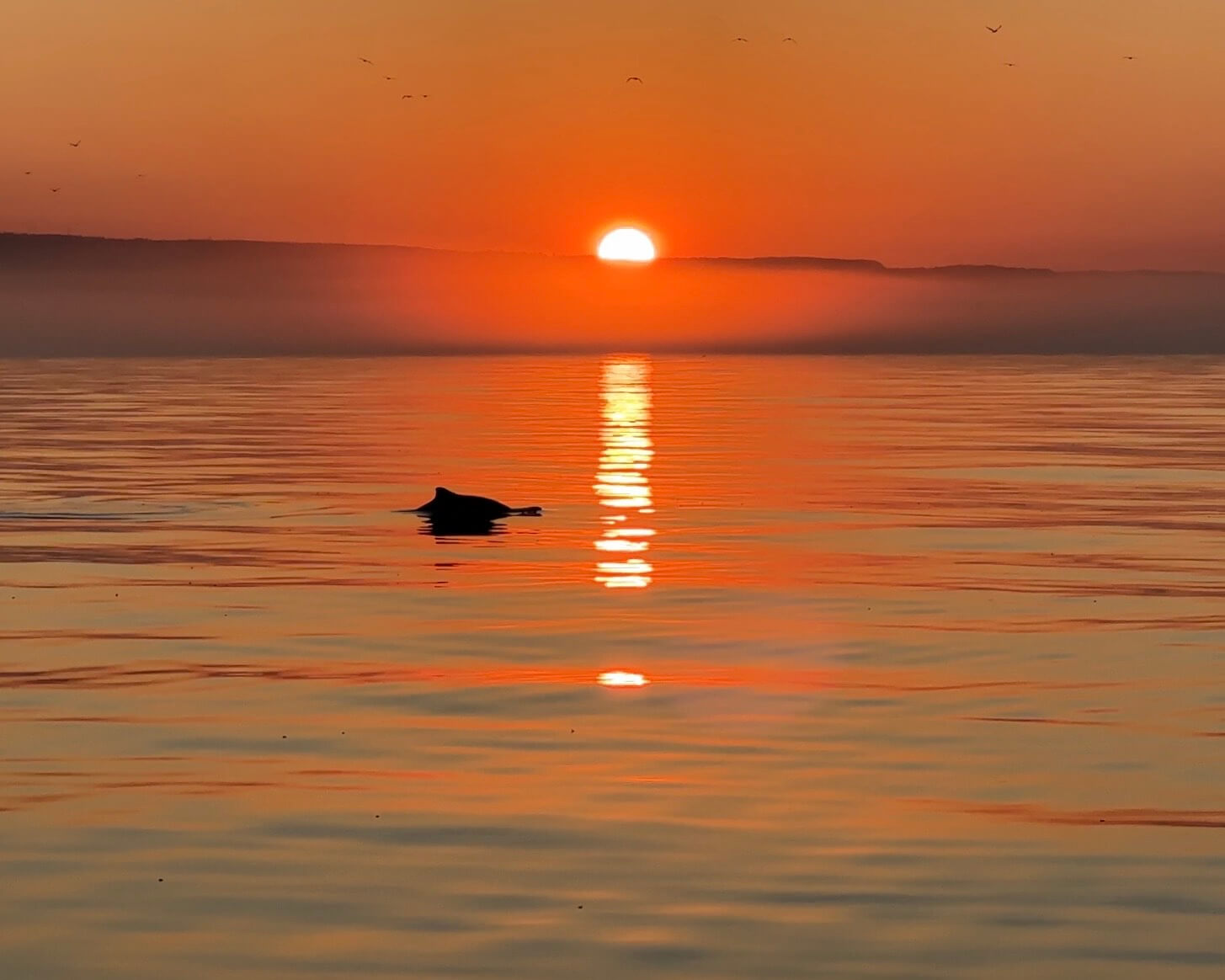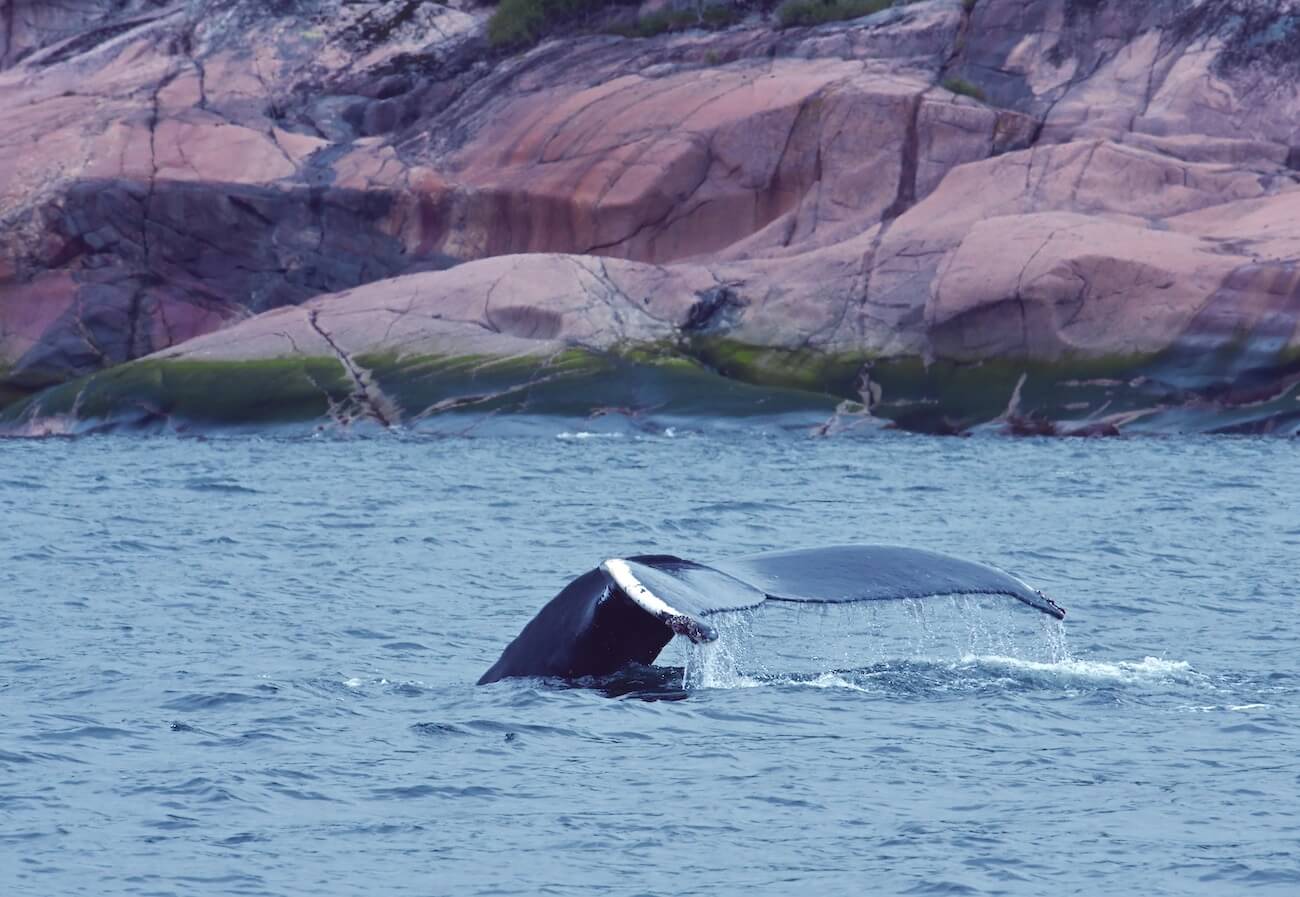On July 29, the GREMM team observed a narwhal in a group of belugas off the coast of Trois-Pistoles. A most unusual observation! The narwhal is an Arctic cetacean. On Tuesday, August 10, naturalists from Parks Canada’s Marine Environment Discovery Centre (MEDC) spotted this whale once again.
Update August 10, 2016 – Narwhal Still in the Estuary

Yesterday afternoon around 4 o’clock, the team of naturalists from Parks Canada’s Marine Environment Discovery Centre (MEDC) contacted the GREMM after having the chance to observe a narwhal in a group of belugas. The group was heading upstream toward Cap de Bon-Désir.
At 5:30, the Parks Canada team set out aboard L’Estran to document the situation. The herd was dense: over 100 belugas, mostly adults. Around 6:00, the initial report is confirmed: a narwhal is indeed in the group! It is recognized by its dark melon and almost black speckles on its back. The animal was behaving normally, surfacing to breath amongst the belugas, who were emitting audible vocalizations and whose behaviour was rather agitated. As the herd then moved away from the coast and farther offshore, we lost sight of the narwhal amongst the belugas.
Analysis of the photos taken by the Parks Canada team confirmed that this is the same individual as the one seen off of Trois-Pistoles on July 29.
Narwhal on the Run – August 1st, 2016
On Friday, July 29, the team aboard the Bleuvet, Michel Moisan and Simon Moisan, made a most unusual encounter. At 6:30 p.m., near Trois-Pistoles, they spotted amongst a group of 60 to 80 belugas a darker individual with an ivory spiral-shaped tusk about 40 cm long: a narwhal! The researchers observed it for over an hour. During this period, it remained in the same group of belugas nearly the entire time, adopting their behaviour, sometimes even blowing bubbles like them! The belugas appeared not to pay any particular attention to it, except a young gray who curiously approached it.
The narwhal is a migratory animal that typically lives in the Arctic waters of Canada, Greenland, Norway and Russia. In winter, the majority of the global narwhal population migrates to the Baffin Bay and Davis Strait region.
What is a narwhal doing in the Gulf of St. Lawrence? Although the narwhal is not a species of the St. Lawrence, one individual was previously observed by a researcher on August 25, 2003, during an aerial survey for the beluga census directed by Fisheries and Oceans Canada (DFO) in the heart of the Marine Park, between Les Bergeronnes and Tadoussac.
[metaslider id=20596]
Property of the  GREMM and the St. Lawrence National Institute of Ecotoxicology, the Bleuvet is a research boat dedicated to the research program on St. Lawrence belugas. Managed by GREMM scientific director Robert Michaud, the Bleuvet crew is composed of Michel Moisan, Tim Perrero and Simon Moisan.
GREMM and the St. Lawrence National Institute of Ecotoxicology, the Bleuvet is a research boat dedicated to the research program on St. Lawrence belugas. Managed by GREMM scientific director Robert Michaud, the Bleuvet crew is composed of Michel Moisan, Tim Perrero and Simon Moisan.





